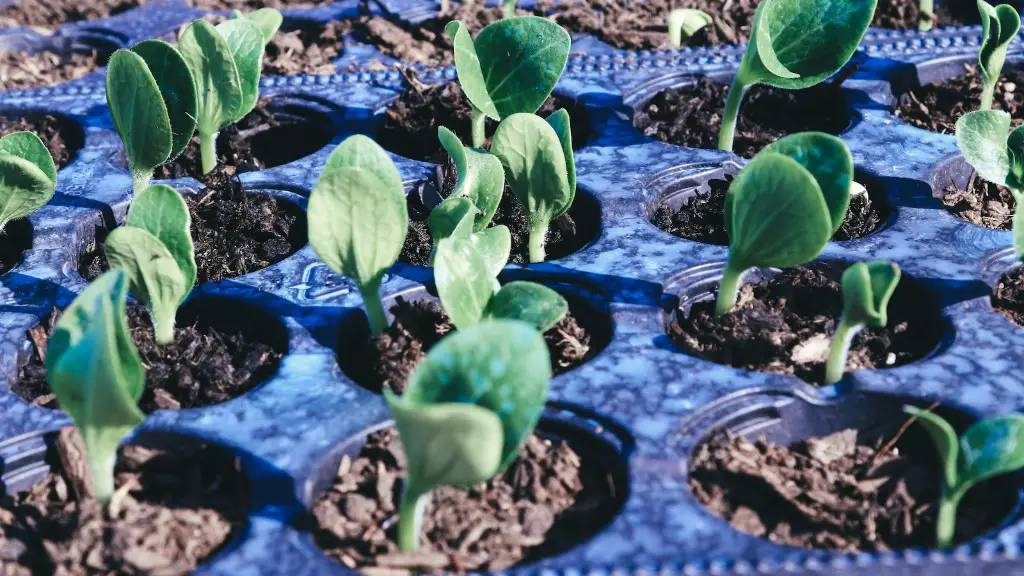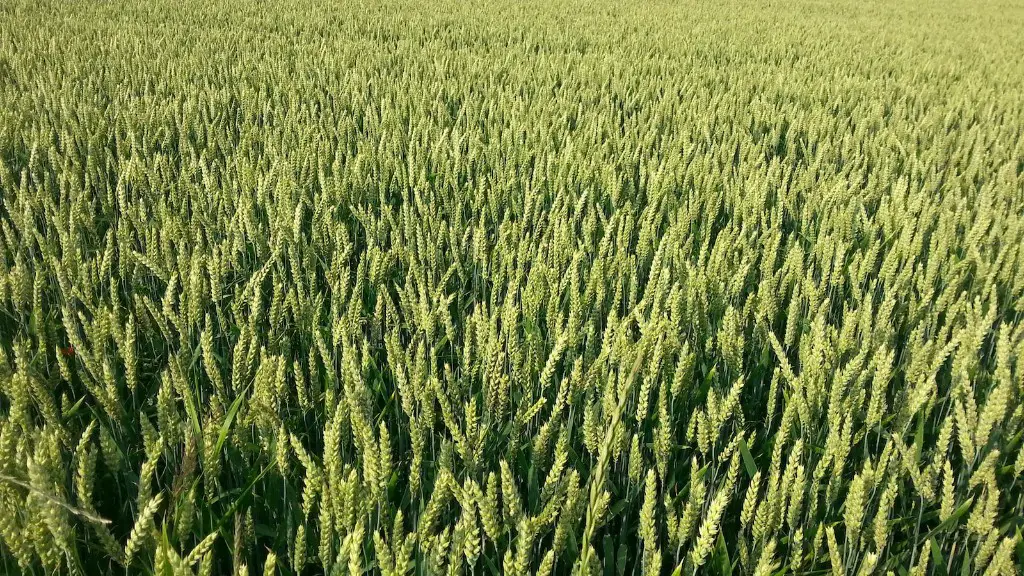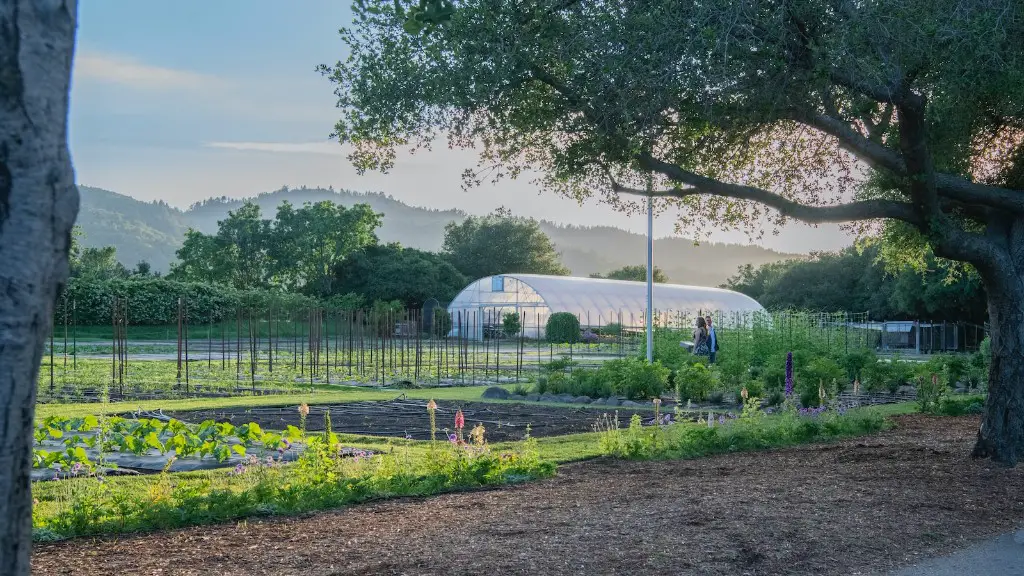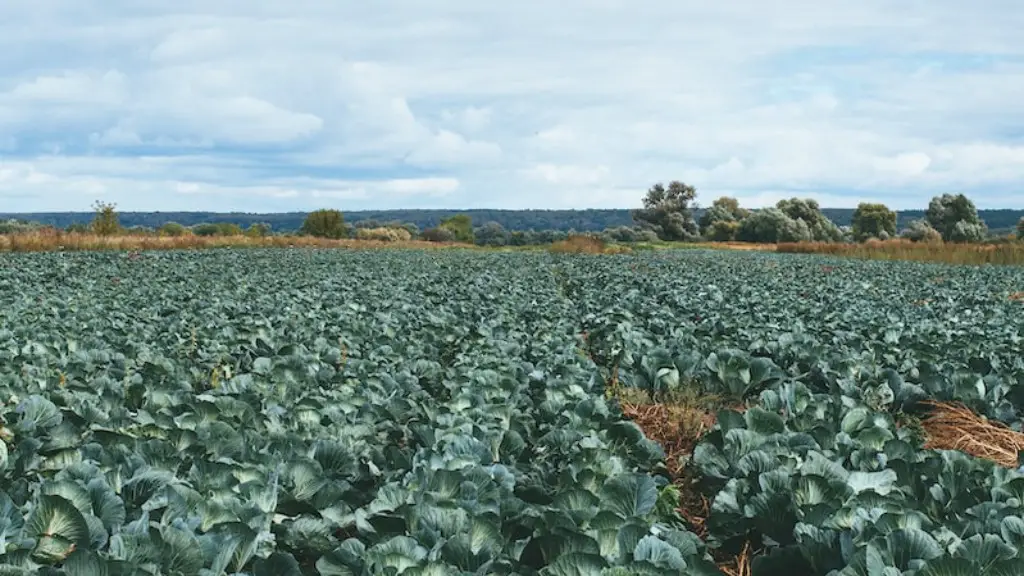Agriculture is a major contributor to global warming. Agricultural activities release greenhouse gases, including carbon dioxide, into the atmosphere. These gases trap heat and contribute to the rise in global temperatures. agriculture also increases the amount of water vapor in the atmosphere, which also traps heat and contributes to global warming.
Agriculture affects global warming in a number of ways. Agricultural activities account for about 10% of total U.S. greenhouse gas emissions. Methane and nitrous oxide, which are emitted by livestock and agricultural soils, respectively, are among the most potent greenhouse gases. In addition, agricultural production requires large amounts of energy and water, which can lead to additional greenhouse gas emissions.
How much of global warming is caused by agriculture?
The global food system is a significant contributor to greenhouse gas emissions, accounting for 21-37% of annual emissions according to recent estimates. The primary sources of these emissions are from agriculture (cultivation and livestock) and food processing. Reducing emissions from the food system will require a concerted effort from all sectors, including producers, processors, retailers, and consumers.
There are a number of strategies that can be employed to reduce emissions from the food system. On the production side, measures such as improved agricultural practices, use of cleaner energy sources, and increased efficiency can all help to reduce emissions. On the consumption side, changes such as eating less meat and waste reduction can also make a difference.
It is clear that addressing greenhouse gas emissions from the food system will require a multi-faceted approach. However, with the right policies and initiatives in place, it is possible to make significant progress in reducing these emissions.
Factory farming is contributing to climate change by releasing vast amounts of greenhouse gases into the atmosphere. Greenhouse gases trap heat and cause the Earth’s temperature to rise, leading to a host of problems like more extreme weather conditions and rising sea levels. Factory farming must be reduced in order to help mitigate climate change and protect our planet.
How does agriculture affect the environment
Agriculture is a leading source of pollution in many countries. Pesticides, fertilizers and other toxic farm chemicals can poison fresh water, marine ecosystems, air and soil. They also can remain in the environment for generations.
Climate change is expected to have a number of impacts on crop production, including increased annual variation, more extreme weather events, and declines in soil and water quality. These impacts will likely lead to increased costs for farmers and reduced crop yields.
Is agriculture the biggest polluter?
It is possible that agriculture accounts for 70% of water use and is the world’s biggest polluter because of the amount of land that is used for agricultural production. The EU farms use 173 million hectares of land for agricultural production, while the US farms use up to 370 million hectares. This means that there is a lot of land being used for agriculture, which could lead to a lot of water being used and a lot of pollution being created.
Agriculture is one of the leading sources of greenhouse gas emissions, which contribute greatly to global warming and climate change. Agricultural practices such as livestock farming and deforestation release large amounts of greenhouse gases into the atmosphere, which trap heat and contribute to the warming of the planet. As the world’s population continues to grow, the demand for food will increase, and unless we take action to reduce agricultural greenhouse gas emissions, the problem will only get worse.
What is the #1 cause of global warming?
Fossil fuels are a major problem when it comes to climate change. They are responsible for over 75% of all greenhouse gas emissions, and nearly 90% of all carbon dioxide emissions. This is a huge issue, as greenhouse gases are trapping the sun’s heat, causing the Earth’s temperature to rise.
We need to find a way to reduce our reliance on fossil fuels, and switch to cleaner and renewable sources of energy. This will not be easy, but it is essential if we want to avoid a climate catastrophe.
Carbon dioxide, methane, and nitrous oxide concentrations have increased significantly in the earth’s atmosphere over the last 800,000 years. This increase in greenhouse gas emissions has caused the greenhouse effect to intensify and the earth’s surface temperature to rise. These greenhouse gases trap heat in the atmosphere and prevent it from escaping into space, causing the earth’s temperature to rise. Additionally, the burning of fossil fuels releases carbon dioxide into the atmosphere, further contributing to the greenhouse effect. To mitigate the effects of climate change, it is imperative that we reduce our emissions of these greenhouse gases.
What is agriculture’s role in climate change
The agricultural sector can play a role in reducing emissions in other sectors by storing carbon in soil and plants, producing energy from biomass and animal waste, and offsetting emissions from other sectors.
Agriculture is a significant contributor to environmental problems. It can lead to soil erosion, water pollution, climate change, and deforestation. Agricultural practices can also have a positive impact on the environment, such as increased soil fertility and improved water quality.
What are 3 effects of agriculture?
While the development of agriculture in a region can have positive effects on the natural life, oxygen production and climate in the region, it can also lead to negative effects such as inorganic nitrate pollution, pesticide pollution and salinity problems, especially in regions where intensive agriculture is practiced.
Climate change affects agriculture in a number of ways; including through changes in average temperatures; rainfall and climate extremes with an important impact on soil erosion (ie floods, drought, etc): changes in pests and diseases, changes in atmospheric carbon dioxide, changes in the nutritional quality of some plants. All of these factors make it difficult for farmers to produce food and fibre in a reliable and sustainable way.
Why is agriculture the biggest mistake
Farming allowed for the domestication of plants and animals, which led to the development of cities and civilizations. However, this also led to deep class divisions, as those who controlled the food sources had power over those who did not. Hunter-gatherers, who had to rely on the whims of the wilderness for their food, were at a disadvantage compared to those who could farm and store food. This led to great inequality and suffering for many people over the years.
The energy industry produces more pollution than any other industry, at a rate of more than 15 billion tons each year. This is largely due to the industry’s dependence on coal, oil and gas.
What is the most wasteful crop?
In Uganda, bananas are the most wasted crop, but a company called Mifumi is working to change that. Mifumi is creating ways to reduce food waste and improve the lives of small-scale farmers. One of their initiatives is a program that trains farmers in proper techniques for growing and harvesting bananas. This program not only reduces food waste, but also improves the farmers’ livelihoods. Mifumi is also working to create a market for banana waste, which will further reduce waste and improve the farmers’ incomes. By working to reduce food waste and improve the lives of small-scale farmers, Mifumi is helping to make a difference in the world.
Carbon dioxide is one of the gases released when farm equipment is used. The amount of carbon dioxide released depends on the type of equipment used and how often it is used. For example, tilling release more carbon dioxide than planting. And, the more passes across the farm field, the more carbon that is emitted.
Warp Up
The Greenhouse gases like carbon dioxide, water vapor, and methane rise into the atmosphere and trap heat, making the Earth’s atmosphere warm. The agriculture sector is one of the biggest sources of greenhouse gases. It is responsible for about 10% of the total global greenhouse gas emissions. The main reason for this is the heavy use of fossil fuels in the sector, like natural gas, oil, and coal. Burning these fossil fuels releases greenhouse gases into the atmosphere. Other agricultural practices that contribute to greenhouse gas emissions are livestock farming and the use of chemical fertilizers.
It is estimated that agriculture contributes to about 10% of global greenhouse gas emissions. Greenhouse gases like carbon dioxide and methane trap heat in the atmosphere, causing the Earth’s temperature to rise. Agriculture affects global warming in a number of ways, including through livestock production, land use, and fertilizer use. Livestock production contributes to global warming both through the emission of greenhouse gases like methane and carbon dioxide, and through land clearing and other land-use changes. Fertilizer use also contributes to global warming, through the release of nitrous oxide.





